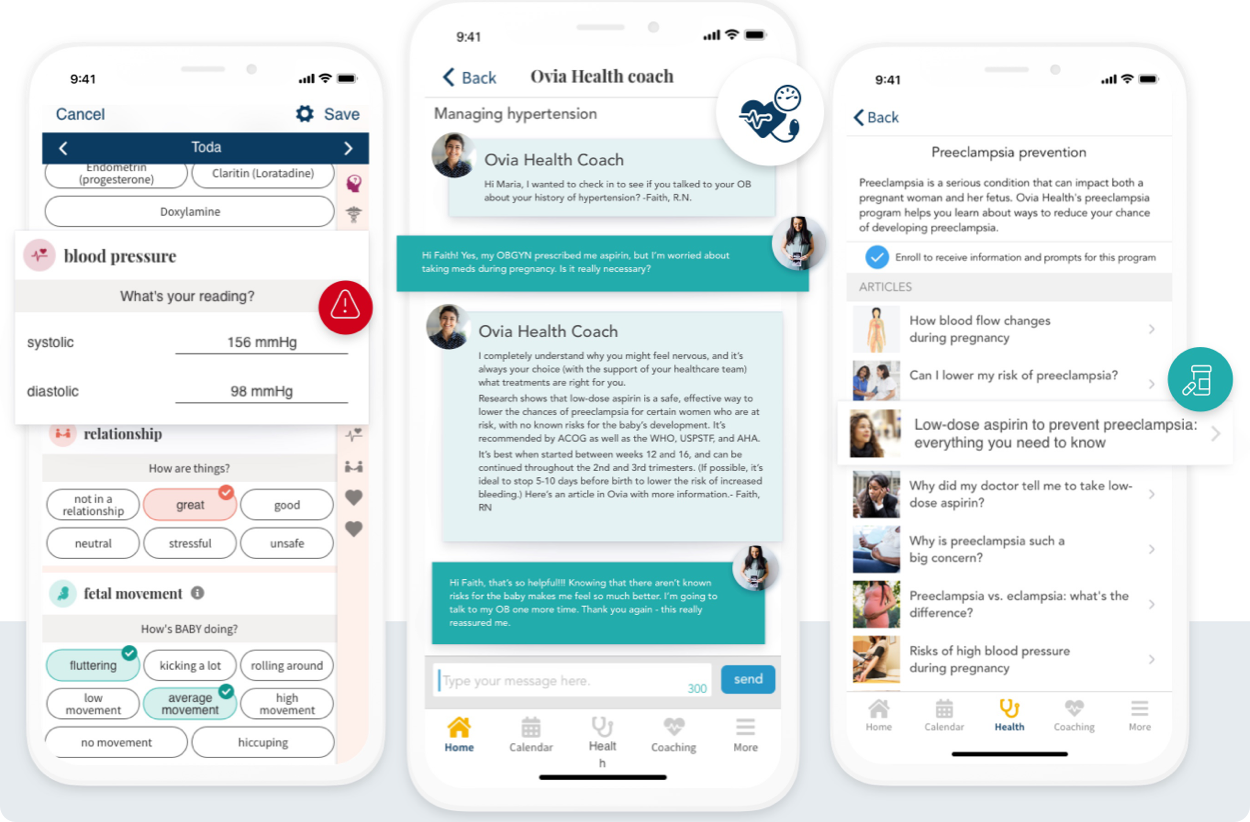- Patients Patients
Reproductive Genetics Testing
Patient Resources
Cost & Billing
- Providers Providers
- Genetic Counseling
- Login Login
- Estimate My Cost

Week 14 to end of week 26
Testing during
the second trimester
During the second trimester, you may undergo several tests and screenings to assess your health and the baby's development. These tests typically include an anatomy scan, gestational diabetes screening, and maternal serum screening. While often performed in the first trimester, prenatal cfDNA (NIPT) screening can be done later in pregnancy. Consult with your healthcare provider to determine the most appropriate tests for your individual circumstances.

Second and Third Trimester Preeclampsia Test
Using a blood sample drawn between 23 and 34.9 weeks' gestation, this test assesses the risk of a hospitalized patient's preeclampsia progressing severely within the following two weeks.
Genetic Screening
Talk to your healthcare provider about the benefits of genetic screening, which can provide important information on the health of your baby. Whether this is your first pregnancy or you are adding to your family, genetic screening can provide insights to help you better understand your health, and that of your future family.

Screening for you and your partner
Carrier screening
Most babies are born healthy. However everyone has genetic variants which can be passed on to the baby. Carrier screening can help determine if your child is at risk for specific disorders such as cystic fibrosis. Carrier screening is usually performed early in pregnancy but can be done later in pregnancy. Carrier screening is usually performed on you first. If your test is positive, additional testing could be offered, either for your partner, your pregnancy or both.

Screening for your baby
Prenatal cfDNA (NIPT) screening
With a routine blood draw early in your pregnancy, prenatal cfDNA (NIPT) screening will determine if your baby is at increased risk for specific conditions including Down syndrome, which could affect your baby's health and development. While often performed in the first trimester, NIPS/NIPT screening can be done later in pregnancy.

Screening for your baby
Maternal serum screening (part 2)
Maternal serum screening helps determine if your child is at risk for specific disorders. Your provider may order one from an assortment for tests in your first-trimester screen, sometimes combined with testing in a later semester. If your provider has ordered you prenatal cfDNA (NIPT) screening they may instead order a stand alone MS-AFP to screen for neural tube defects and may not order maternal serum screening. Consult with your healthcare provider to determine the most appropriate screening for your individual circumstances.
Understanding prenatal cfDNA (NIPT) screening

genetic counseling
Genetics is complicated. Navigating the world of genetics doesn’t have to be.
Genetic information and knowledge is changing rapidly, and understanding your genetic screening choices can be complicated, so it is important to have a trusted source for gaining answers to your questions.
Our board-certified genetic counselors work with you and your doctor to help you understand your genetic risks and screening options. You may talk with a genetic counselor when you are considering genetic screening, or to discuss your results.
Screening for preeclampsia during pregnancy
Did you know 1 in 25 pregnancies in the U.S. are affected by preeclampsia?1 Preeclampsia symptoms are similar to common pregnancy-related symptoms, potentially delaying diagnosis and treatment. Most people will deliver healthy babies and recover without experiencing serious complications during pregnancy. However, it’s still important to recognize the symptoms and risk factors of preeclampsia, the leading cause of maternal and infant illness and death.
Healthcare providers may monitor for signs and symptoms of preeclampsia, such as:
- High blood pressure: This is a key indicator of preeclampsia.
- Proteinuria: The presence of protein in the urine.
- Swelling: Edema, especially in the hands, feet, and face.
- Severe headaches: Persistent or sudden, severe headaches.
- Vision changes: Blurred vision or spots in vision.
- Abdominal pain: Especially in the upper right abdomen.
Regular prenatal check-ups, including blood pressure measurements and urine tests, are crucial for early detection of preeclampsia. Early diagnosis and treatment are essential to prevent serious complications for both the mother and baby.

It's important to note that preeclampsia can develop rapidly, so it's crucial to attend all prenatal appointments and report any concerning symptoms to your healthcare provider immediately. If your healthcare provider suspects preeclampsia, they may recommend additional tests including Labcorp’s Second and Third Trimester test which can provide fast confirmation for hospitalized patients.

patient story
A mother's mission to save lives by raising preeclampsia awareness
For many, pregnancy can be a very special and personal milestone. It’s also a dynamic time: both mother and baby change and evolve daily. Anything involving rapid change also comes with the potential for complication. When it comes to pregnancy, one of the most dangerous complications is preeclampsia.
Products from our partners
Gestational Diabetes Screening and your choice in glucose beverages
Labcorp patients now have a choice in glucose beverages. You may choose between a traditional glucose beverage (available through your physician or laboratory) or a natural Non-GMO option, called The Fresh Test™. This can be purchased at www.TheFreshTest.com.
The American Diabetes Association (ADA) recommends screening for Gestational Diabetes Mellitus (GDM) between 24–28 weeks.2 To screen for GDM, you will take an initial glucose load test for which you will need to consume a glucose beverage an hour prior to a plasma glucose test. The plasma glucose test is performed by appointment at one of Labcorp’s patient service centers or your physician’s office. Please consult with your healthcare provider to confirm if you will be taking the 50-gram, 75-gram or 100-gram glucose test as they have different requirements. Then order your glucose beverage today so it arrives in time for your scheduled glucose load test appointment.
Gestational Diabetes affects 7% of pregnant women3. Uncontrolled GDM poses risks including, but not limited to, preterm birth, fetal anomalies, preeclampsia, macrosomia, neonatal hypoglycemia, neonatal hyperbilirubinemia and a higher risk of developing diabetes post-partum2.
Please consult with your healthcare provider to confirm if you will be taking the 50-gram, 75-gram or 100-gram glucose test as they have different requirements.

OVIA® Health APP
Ovia is your companion for the journey ahead.
Download Ovia® Health to understand development stages, track your weekly milestones, and access a library of pregnancy features and tools.

References
- Centers for Disease Control and Prevention. High Blood Pressure During Pregnancy. Updated June 6, 2024. Accessed June 10, 2024. https://www.cdc.gov/high-blood-pressure/about/high-blood-pressure-during-pregnancy.html
- Management of Diabetes in Pregnancy: Standards of Medical Care in Diabetes—2019. Diabetes Care. 2019;42(Supplement 1):S165. doi:10.2337/dc19-S014
- March of Dimes. Gestational Diabetes. https://www.marchofdimes.org/complications/gestational-diabetes.aspx. Accessed March 11, 2021.


